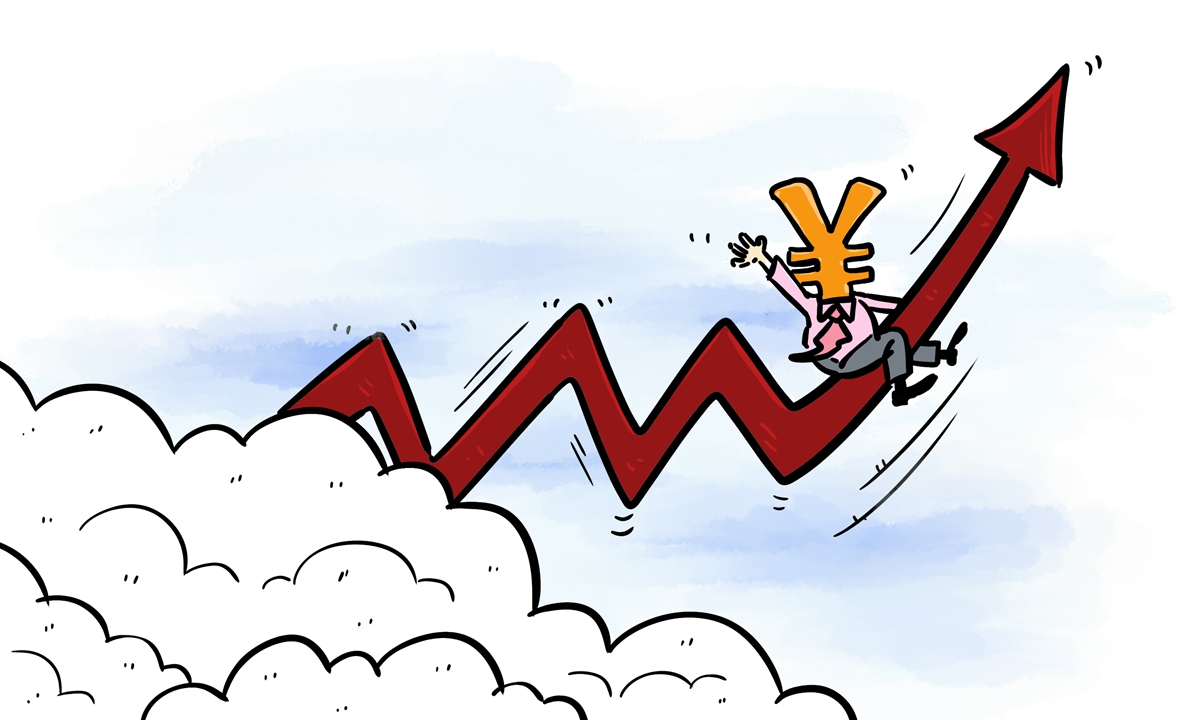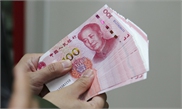COMMENTS / EXPERT ASSESSMENT
Yuan keeps appreciating, buoyed by China’s robust economy

Illustration: Chen Xia/GT
China's currency, yuan, has continuously strengthened since June alongside the rapid recovery of China's economy. This appreciation trend has, however, had limited impact as Chinese exports remain resilient in the past months, and the nation's domestic market has shown rosy prospects guided by the new growth strategy known as "dual circulation".On Wednesday, the central parity rate of yuan strengthened 60 basis points to 6.5749 against the US dollar, according to the China Foreign Exchange Trade System. Observers believe that the yuan's exchange rate versus the US dollar has entered the "6.5 era" after months of rapid appreciation, from a low point of 7.1775 in middle May.
The underlying reasons are clear. For starters, China's strong economic fundamentals are supporting yuan's rise. With strict and effective containment measures, China put the coronavirus outbreak under firm control within months, while other economies are still being undermined by the pandemic.
Production and business operations in China have resumed and are gaining momentum under effective guidance by the central government, including a set of stimulus fiscal and monetary policies. After a 4.9-percent GDP expansion in the third quarter, the Chinese economy was able to achieve 5.5-6 percent growth in the fourth quarter.
The deadly pandemic has been ripping through the world, with nearly 60 million confirmed infections and more than 1.4 million fatalities so far, according to data from Johns Hopkins University. The US leads the list, with daily new cases still setting records.
The failure to contain the virus has darkened the prospects of the US economy. According to IMF estimates, the US economy may contract 4.3 percent this year, which would inevitably lead to heightening risk aversion of global investors to purchase US dollar assets.
Moreover, the US presidential election added uncertainties to the US economy, which has been hard hit by the virus, further dampening investors' appetite for US dollar-denominated assets.
With Joe Biden is expected to enter the White House, and with vaccine development reportedly making progress, the dollar's depreciation trend may ease. Trump administration's stimulus package is nearing an end in December, leaving a vacuum of policy before January 20, 2021.
Leaving aside this changing background, yuan's appreciation won't exert much impact on China's exports, because overseas demand from Chinese goods remains strong.
Medical supplies were one of China's important exports during the first three quarters, which had an inelastic demand amid the pandemic. With Chinese vaccines set to hit the market in the near future, it may later replace the export share of the medical supplies. Not to mention that overseas demand is expected to recover after vaccines become available.
Rather than continuing on the export-oriented path, China's economy is now on a high-quality development. With its new economic pattern featuring "dual circulation," which takes the domestic market as the mainstay while the internal and external markets complement each other, the market of 1.4 billion people is gathering the energy to drive economic growth, which would draw more attention from Chinese producers and help them to hedge risks caused by fluctuating exchange rates.
The article was compiled based on an interview with Zhao Xijun, vice president of the School of Finance at the Renmin University of China. bizopinion@globaltimes.com.cn



